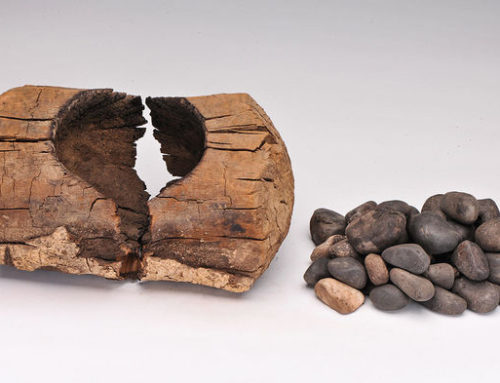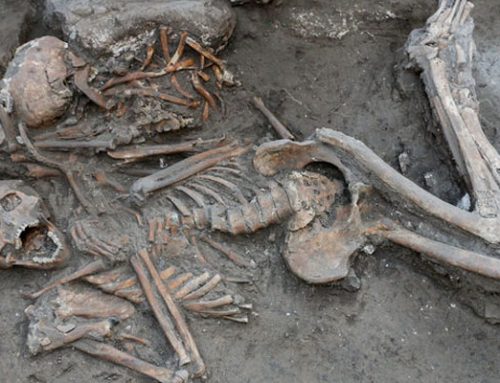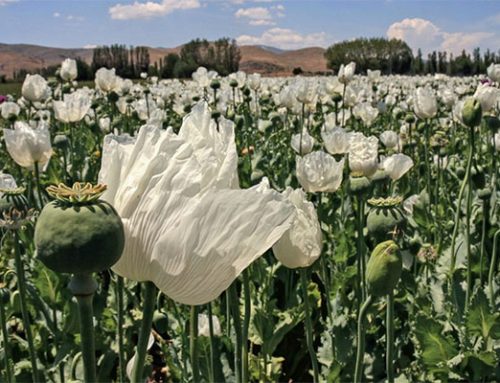The Islamic State group strikes one valuable archaeological site after another, destroying priceless ruins and artifacts.
The ancient city of Hatra fended off two Roman emperors and repulsed a ruler of Persia’s powerful Sassanid dynasty. But late last week, local people near the ornate ruins about 110 kilometers southwest of the Iraqi city of Mosul heard massive explosions that likely marked the demise of the 2000-year-old city and its spectacular, well-preserved sculptures and stone architecture.
 While inflicting misery on the people of northern Iraq, supporters of the Islamic State group have also attacked one ancient site after another in the past 2 weeks, systematically taking sledgehammers and drills to artifacts. Other reports say that the forces of the group, increasingly known by its Arabic acronym Daesh, are using bulldozers to demolish ancient buildings. By last week the toll included the statues in the Mosul Museum, the classical site of Hatra, and the ancient Assyrian capitals of Nineveh, Nimrud, and Khorsabad, famed for their massive protective deities in the form of humanheaded winged bulls. Assur, a 4500-year-old temple-studded Assyrian city where kings and queens were laid to rest for centuries, is likely the next target, say archaeologists, who are desperately trying to piece together the extent of the damage.
While inflicting misery on the people of northern Iraq, supporters of the Islamic State group have also attacked one ancient site after another in the past 2 weeks, systematically taking sledgehammers and drills to artifacts. Other reports say that the forces of the group, increasingly known by its Arabic acronym Daesh, are using bulldozers to demolish ancient buildings. By last week the toll included the statues in the Mosul Museum, the classical site of Hatra, and the ancient Assyrian capitals of Nineveh, Nimrud, and Khorsabad, famed for their massive protective deities in the form of humanheaded winged bulls. Assur, a 4500-year-old temple-studded Assyrian city where kings and queens were laid to rest for centuries, is likely the next target, say archaeologists, who are desperately trying to piece together the extent of the damage.
The unprecedented wave of destruction has prompted a small protest march in Washington, D.C., as well as statements of outrage from archaeologists and museum curators around the world. U.N. officials have said that the events constituted a war crime. “Those barbaric, criminal terrorists are trying to destroy the heritage of mankind and Iraq’s civilization,” said Iraqi Prime Minister Haider al-Abadi. He spoke during a ceremony on 28 February in which his government reopened Baghdad’s long-shuttered Iraq Museum as a way of reaffirming the importance of the country’s heritage.
Outside experts feel the losses keenly, because northern Iraqi sites have been largely off-limits to study since the start of the first Gulf War a quarter-century ago. “Assyria was the first true empire in world history,” says Yale University Assyriologist Eckart Frahm. Its “scholarly exploration is far from complete.” For example, many of the inscriptions at Nimrud have yet to be properly documented, he says.
Representatives and publications from the Islamic State group have said that statues and reliefs of animals and humans are anathema to their brand of Sunni Islam. “We were ordered by our prophet to take down idols and destroy them,” explained an unidentified Daesh representative in a video widely distributed earlier this month, which showed men pushing intricately carved statues off their plinths and smashing the remains with sledgehammers. Another video image showed a man using an electric drill to destroy the human face of a huge winged bull standing at a gate at Nineveh.
Independent Iraqi archaeologist Lamia al-Gailani, based in London, identified the location of the destroyed statues as the Mosul Museum and said that 26 of the 30 statues in the museum’s Hatra hall were originals, made during Hatra’s heyday at the start of the common era. She adds that 21 of 24 Assyrian reliefs and statues from Nineveh and Nimrud in the museum were also originals.
The militants spare some artifacts because sales serve as an important source of revenue, according to organizations tracking the illicit antiquities trade. Irina Bokova, the head of the United Nations Educational, Scientific and Cultural Organization, said that officials are examining images that showed looted material from Nimrud, about 30 kilo meters southeast of Mosul, “put on big trucks” and transported, possibly for sale.
 After looting Nimrud, the capital of the sprawling Assyrian Empire in the 8th century B.C.E., Islamic State forces reduced some or all of it to rubble. Abdul Amir Hamdani, an Iraqi archaeologist at Stony Brook University in New York, spoke with a colleague in Mosul familiar with the situation and reports that Islamic State forces occupied Nimrud for several days before bulldozing it from noon to late evening on 5 March.
After looting Nimrud, the capital of the sprawling Assyrian Empire in the 8th century B.C.E., Islamic State forces reduced some or all of it to rubble. Abdul Amir Hamdani, an Iraqi archaeologist at Stony Brook University in New York, spoke with a colleague in Mosul familiar with the situation and reports that Islamic State forces occupied Nimrud for several days before bulldozing it from noon to late evening on 5 March.
The next day, explosions were heard at Hatra, though the extent of damage at the statue-filled site remains uncertain. Then on 8 March, the Iraqi government said that Islamic State supporters demolished Khorsabad, another ancient Assyrian capital about 15 kilometers northeast of Mosul. Hamdani and other archeologists fear that Assur, nearly 100 kilometers south of Mosul, is next, although that site lacks the large sculptures that have previously drawn Daesh’s attention.
In an 8 March press conference in Baghdad, Adel Fahad al-Shershab, Iraq’s minister of tourism and antiquities, lamented the lack of international action. “We request aerial support” from the United States, he said. American bombers carried out a dozen airstrikes in the region this past weekend, but it was not clear if protecting the sites was part of the mission. American bombers are striking Islamic State forces involved in the destruction and looting, including machinery like bulldozers and earth excavators, said U.S. Defense Department spokesperson Kim Michelsen. “But we don’t have troops on the ground to protect the sites—and that might make them even more of a target,” he said.
U.S. spy satellites, however, could provide important data on the exact extent of damage. The U.S. State Department made a “high-priority request for new satellite imagery,” according to a source there. Realtime imaging could conceivably be used to follow the trucks that left Nimrud, and so track looted material. But such requests will likely take a back seat to ongoing military operations, including a battle now unfolding around Tikrit. Meanwhile, Sunni Islam’s leading institution, al-Azhar in Cairo, put out a statement declaring that the destruction “is forbidden in Islam and rejected in total … [and is] a major crime against the whole world.”
For Near Eastern archaeologists, the news provoked both outrage and a sense of helplessness. Many say they are at a loss about what they could do to reverse—or even assess—the damage. The University of Chicago, long a center of research in the field, said in a statement that the events add “to the growing spiral of despair from both Iraq and Syria.” Hamdani expressed his anger by helping organize a small 10 March protest near the White House. “Thousands of years of history are being smashed by the hammers of ignorance,” he says. “With each destroyed statue, a story is forgotten.”





